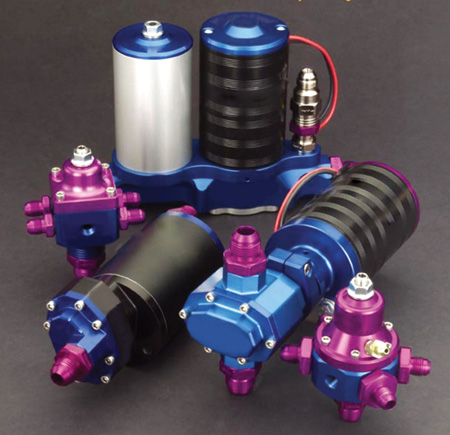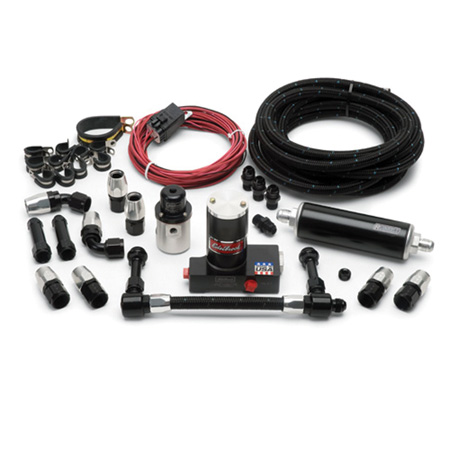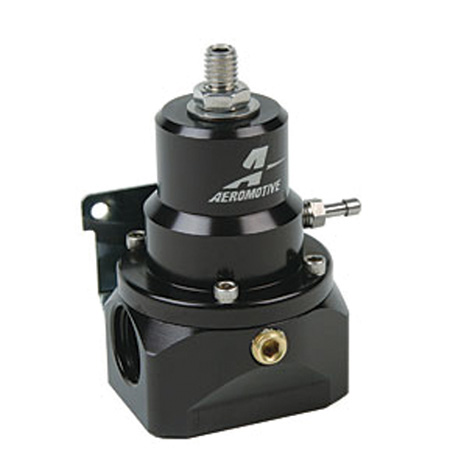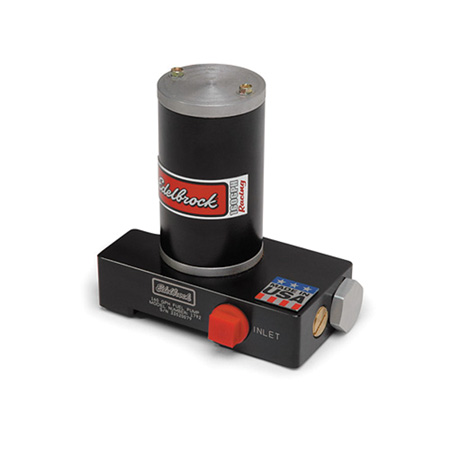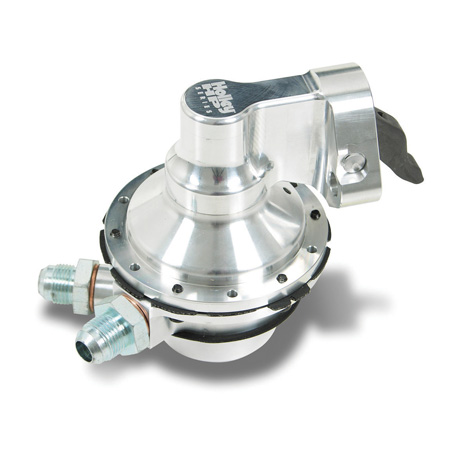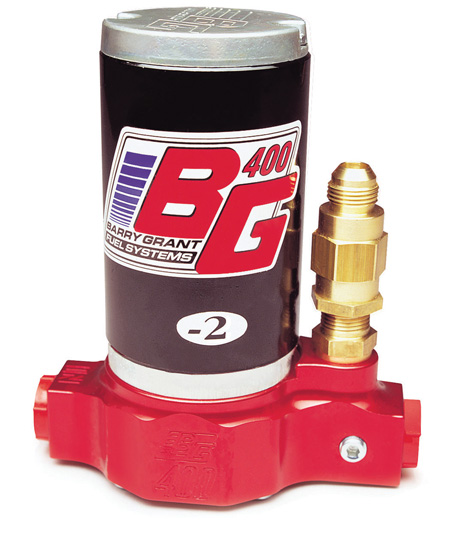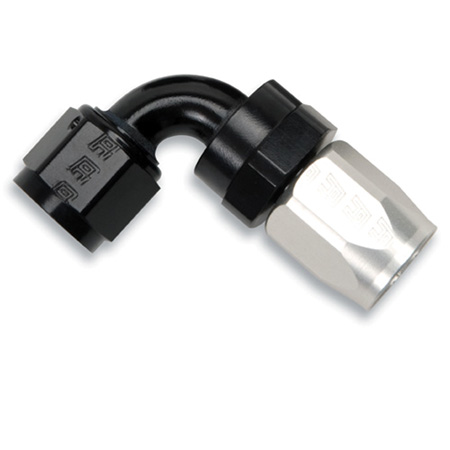Consider this – a high 10 second drag car will burn up one gallon of gasoline in 25 seconds or less, but a car that can run a 7 second E.T. will burn the same amount of fuel in half the time. The physics involved with fuel flow to create horsepower is difficult for even experts to understand, but one thing is for certain: if the fuel system is marginal, you won’t be able to get the maximum out of the engine, which could lead to an unhappy customer who will take his engine elsewhere.
There are many different components and configurations involved in a racing fuel system – a system largely made up of valves, pumps, diaphragms, seals and orifices. Therefore, several variables come into play when setting up a fuel system for a performance application. The main purpose of the fuel system is to pull fuel from the tank and deliver it to the carburetor or injectors with enough volume and pressure to overcome any forces (G-forces, weather, etc.) that may be working against the system.
Before you choose a fuel system and its related pumps, regulators, etc., you will need to know what type of fuel your customer will use. If it’s a different fuel than gasoline such as nitrous or alcohol, for instance, the engine you build will require more fuel (volume) than what you would normally burn for a gasoline engine, so you will likely need a modified system that can flow enough for the engine’s needs.
Typically, at wide-open throttle (WOT) a gasoline engine will burn approximately .5 lb. of fuel per hour for every horsepower. So that means a 650 hp engine will burn 325 lbs. of fuel every hour. Selecting the proper fuel system components for your customer’s performance application, whether it’s for the street or the track or a combination of both, is as important as the internal components you select.
Fuel systems vary depending on what type of induction system you use. If you are running electronic fuel injection (EFI), you will need a different system than you would if you’re running a carbureted engine. In many forms of racing and on many street performance engines, carburetors are still king. And a high efficiency fuel pump that delivers volume and pressure with a dynamic, return-style regulator, designed for use with carburetors will often solve mysterious fuel problems.
Often times engine builders only see part of the fuel system such as the carburetor or injectors and the necessary plumbing to and from these components. If you have a stock or modified mechanical pump or belt driven pump, you may get to build a lot more of the system.
Performance Pumps
There are many racing and performance fuel pumps on the market available from several manufacturers built to suit nearly every application. Knowing what to choose for your customer’s engine can be a complicated decision, and you will need to ask many questions and talk to some manufacturers if you still aren’t sure whether the pump is correct for the application.
Just because the engine runs without a miss or sputter, doesn’t mean that the engine is getting enough fuel or that the system is optimized. After all, the more pounds of fuel an engine can burn efficiently, the more horsepower it will produce. In some racing applications such as certain stock cars classes, when a mechanical fuel pump is specified by the rules, a belt drive or hex drive fuel pump is recommended. These pumps offer higher fuel delivery volume for a mechanical pump while also maintaining lower fuel pressure at lower engine speeds.
For drag racing applications, an electric fuel pump is often the best way to go. These pumps will help prevent fuel starvation or “laying down” at mid-track. If your drag racing customer complains of this problem, the engine may be experiencing intermittent fuel starvation.
The reason for this is because under hard acceleration the demand for fuel increases. But the quick acceleration (G-forces) can cause the float bowl levels to drop and lead to fuel starvation. In high gear, engine speed increases more slowly allowing the bowls to fill again.
Fuel pump manufacturers, for the most part, rate their pumps based on calculating gallons-per-hour. And while this is an important factor that helps determine which fuel pump is the most suited for a particular engine combination, so too are things such as engine horsepower and fuel efficiency, commonly referred to as BSFC or Brake Specific Fuel Consumption; maximum fuel system pressure and the flow volume at that pressure; available voltage at the pump under load and the flow volume at that voltage. Different engine combinations, power adders, even fuel octane ratings and tuning approaches can have a significant impact on BSFC. You must consider these factors carefully when choosing a fuel pump.
Naturally aspirated engines are normally most efficient with a BSFC between .4 and .5 pounds of fuel per horsepower per hour (lbs/hp/hr). And engines enhanced by nitrous typically use a little extra fuel and often develop a BSFC from .5 to .6 lbs/hp/hr. Forced induction engines are usually least efficient and BSFC ranges from .6 to .75 lbs/hp/hr.
Regulators
Fuel pressure should normally be set between 6 and 8 psi for a gasoline carburetor. However, experts point out that fuel pressure is not a substitute for volume. If the fuel bowls are not full, the pressure in the system doesn’t mean anything. In fact, experts say, fuel pressure is simply an indication of the amount of restriction in the fuel system.
Most electrical fuel pump systems require the use of at least one fuel pressure regulator. It is often recommended to use two regulators in high horsepower engines to avoid excessive fuel restriction and provide adequate volume.
In some pumps, such as a mechanical fuel pump, a bypass is often preferred rather than a regulator. A diaphragm bypass without an idle bleed is recommended when constant fuel pressure is needed from an electrical or mechanical pump.
A belt driven fuel pump, using gasoline or alcohol, requires a diaphragm bypass with an idle bleed. Higher pressure mechanical fuel pumps delivering alcohol require a throttle bypass to supply the variable fuel pressure required by the carburetor.
Filters
Use of a filter is highly recommended as long as it doesn’t restrict fuel flow. But you should always use a fuel filter that is specifically designed for racing. The latest technology in fuel filters allows more filtration as well as higher flow.
The fuel filter should be installed in the line before the fuel pump. This prevents any debris from entering the fuel pump or the rest of the system, including inside the engine.
You would never think of running a race engine without an oil filter, yet sometimes the fuel filter is not added or upgraded for performance applications.
Fuel Control
Steady and significant improvements to cylinder heads, intake manifolds and carburetors and injectors have necessitated the need for more efficient fuel systems in order to get the maximum power out of the engine.
Determining the fuel volume necessary for a particular engine is the first step in selecting a fuel pump. How does fuel pressure affect pump delivery? The effect of rising fuel pressure has significant impact on flow volume. By eliminating unnecessary fuel pressure rise, increases flow, maximizing the power potential of any fuel system.
Another factor to consider in fuel pump performance is voltage supply as measured at the fuel pump terminals. Voltage to an electric motor is like fuel pressure to an injector: more pressure in equals more volume out. Higher voltage at the pump terminals increases motor torque, resulting in more rpm and an increased flow volume for a given pressure. To illustrate this, a fuel pump manufacturer tested one of its pumps at 80 psi and had a 40 percent increase in volume when the voltage was increased from 12v to 13.5v.
The fuel system’s first priority is to keep the floats from running low enough to uncover the main jet, running the engine out of fuel. It may not seem significant but the weight of fuel above the main jet does impact fuel flow through it, and therefore the air/fuel ratio of the engine under load. Here the typical static fuel system struggles. The fuel is standing in the line, barely moving and to make matters worse, the static style regulator places the check valve between the fuel pump and carburetor, restricting fuel flow across the board.
To combat this, fuel pressure in a static system should always be higher from the pump to the regulator than it is from the regulator to the carburetor. This higher line pressure is necessary for two reasons, one to start flow against G-forces and to push fuel through the restrictive regulator valve. The benefits of a dynamic, return style fuel system are many, including longer pump life, a noticeable increase in pump to horsepower ratings (allowing smaller, lighter pumps to fuel more hp), even quieter pump operation is common. Ultimately, combining the right pump and regulator into a dynamic fuel system significantly improves average float level, fueling the bowls more quickly and consistently.
To produce torque and horsepower requires a mixture of air and fuel. As explained earlier, a 600 hp engine will require 300 lbs. of gasoline per hour and, by the same formula, an 800 hp engine needs 400 lbs. per hour. Also note that all the fuel has to be delivered past the needles and seats (or injectors in EFI) and the fuel pressure regulator.
So what happens if fuel delivery is not optimized? That hot camshaft, carburetor, and flowed set of heads may have overstressed an already taxed fuel delivery system. Carburetors cannot disperse the optimum air/fuel mixture unless the fuel system has the ability to maintain correct float bowl levels. Fuel levels that are too low may not cause the motor to miss or “burn” a piston, but they will reduce fuel flow and lower performance.
As an engine builder, the fuel system may not be entirely your responsibility if you are supplying an engine with an external fuel pump. Most modern engines have electric fuel pumps mounted in the fuel tank. Many racing engines use an electric fuel pump mounted to a chassis rail. In many cases the fuel system, which, for the sake of this article, includes the fuel lines, regulator, fittings, pump, filter, rails, tank, etc. These parts of the fuel system must work together harmoniously to produce the right amount of fuel at the right time – like when the driver mashes the gas.
The fuel system is your engine’s lifeline and without an adequate supply of fuel, your engine will literally starve to death. Racing and high performance engine applications require special attention to the fuel system and may require upgrading to handle the needs of that application. If you’re building any kind of modified engine, you will likely have to modify the fuel pump, plumbing and filters of the system to keep up with the demands of the engine. No matter if you run fuel injection or carburetor, a stock fuel system is not likely going to supply enough fuel when you need it (or when the driver needs it).
| Sources:
|
